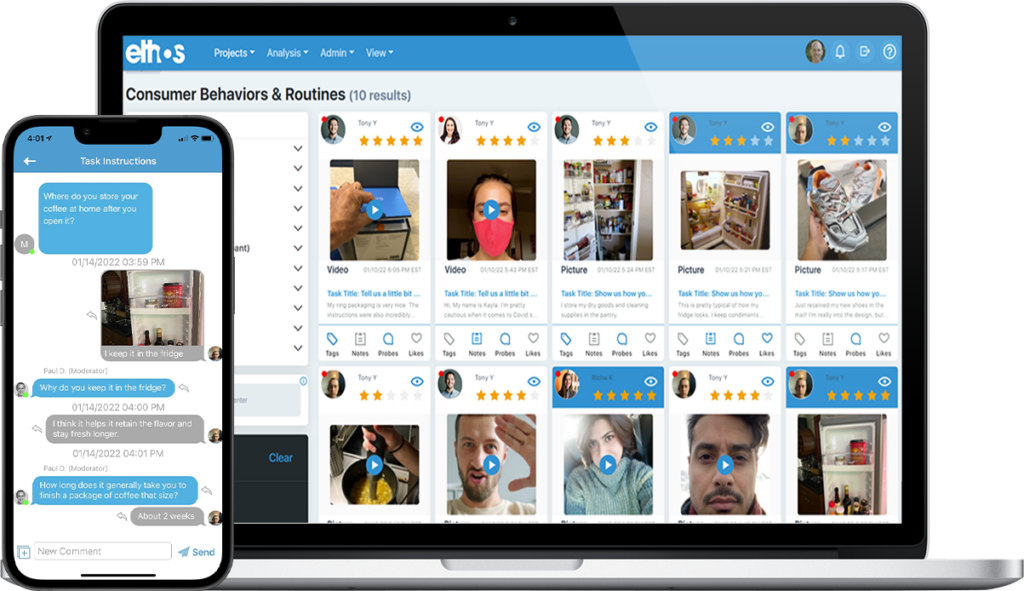Introduction
To get in touch with modern customers, researchers and designers must first understand the range of needs, preferences, and behaviors of their target audience. A one-size-fits-all approach to designing products and services to meet the growing array of customers does not work. With more and more companies developing products and innovating solutions that fit into customers’ lives, UX researchers and designers can’t afford to build products based on assumptions and theory.
User Research Tools
To uncover the required insights, UX teams need the right tools to properly investigate how to meet real users’ needs. When researchers and designers have access to the right UX tools, they are empowered to innovate richer designs and drive the business forward. By understanding the behaviors, thoughts, challenges, and what makes up the everyday lives of users, UX teams can build products and services that enhance users’ experiences. Remote UX research tools have enabled UX teams to gather more insights from users than ever before. Additionally, these tools can significantly speed up the research process by gathering and analyzing data collected in real time.
Proper UX research tools enable UX teams to dive deeply into the daily lives of users and explore potentials for further enhancements and innovation. Whether experienced or novice in user research, every teammate benefits from understanding the stories behind the data. To truly pair data with real user experiences, teams must invest in high-quality tools that provide ample support for a variety of UX research methods, a sound and steady platform, and an easy UI for researchers and participants.
Tech trends like machine learning, AI, and the metaverse are changing the way people interact with the world around them. Remote user testing platforms enable companies to keep pace in a rapidly changing market by helping them understand their users and how their behaviors are shifting with the introduction of these new technologies to their lives. They also help companies test and figure out how to incorporate new trends into their offerings to better meet the needs of their users.
In the remainder of the post, we will discuss 3 of the top user research tools UX teams can leverage for remote studies.

EthOS
EthOS is a user research tool built to allow teams to see things hidden in plain sight, unlocking next-level innovation and product development. The platform is built to meet the growing demands for deeper and more robust user insights. From recruitment to AI reporting, EthOS enables teams to more efficiently conduct generative research like diary studies, mobile ethnography, contextual inquiry, and more. EthOS understands that teams build their best products when they truly understand their users’ needs.
An immersive platform that allows for global research, EthOS gives an edge to teams looking to innovate and lead the market into new frontiers. According to reviews on G2, companies who have used EthOs have lauded its highly flexible nature and sound foundation that supports UX research. Built by experienced researchers, this tool has found a unique role in the market of UX platforms as it goes beyond what most UX platforms do by enabling teams with the following supported methods.
Supported Methods:
- Diary Studies
- Mobile Ethnography
- Mixed Methods
- Chat-based Interviews
- PhotoVoice
- Mobile Usability Testing
Novel features:
- ChatGPT integration for instant qualitative analysis
- Unmoderated Testing
- Participant Journey Reports
- Sentiment Analysis Reports
- Automated Transcriptions
- UX Repository & Data Themes
- Real-Time Probing
- Recruiting & Managing Participants
User Interviews
User Interviews is a UX research tool that allows researchers to directly recruit participants for user interviews and usability tests. The platform supports recruitment for both remote moderated and unmoderated testing in a matter of hours and days instead of weeks. The platform enables users to recruit participants that match the characteristics of their target audience by demographics, background data, and building screeners. User Interviews allows users to schedule interviews and tests themselves, which increases the success rates and speed of such sessions. The tool also allows UX teams to incentivize participants easily and quickly. Its simple UI makes participant management easy and painless.
Supported methods:
- User Interviews recruiting
- Usability Tests recruiting
- Focus Groups recruitment
- Multi-Day Study recruitment
Novel features:
- Messaging
- Zoom & Calendar Integrations
- Fast Recruiting
- Unmoderated Testing recruitment
Zoom
Though not built solely for User Research, Zoom has become a go-to tool for conducting simple research tests. We included it in this list for teams that lack significant budget but still face demands for rich user insights. Though Zoom can be a convenient tool, it may not have the advanced capabilities or specialized features needed for deeper insights and effective workflows. Zoom can be even more beneficial when used alongside a dedicated UX research platform.
UX research methods like remote interviews, focus groups, and usability tests can be conducted through moderated sessions. Features like transcriptions, chat, screen sharing, and recording can all be valuable to performing simple and straightforward tests.
Supported methods:
- Moderated User Interviews
- Moderated Usability Tests
- Moderated Focus Groups
Novel features:
- Calendar & Email Integration
- Note-Taking
- Screen sharing
- Transcription
- Recording
- Chat Feature
Conclusion
By investing in the right user research tools, UX teams can gain valuable insights, innovate richer designs, and drive their businesses forward. The combination of robust platforms like EthOS, efficient recruitment tools like User Interviews, and complementary tools like Zoom can empower teams to create exceptional user experiences and stay competitive in an ever-evolving market.

